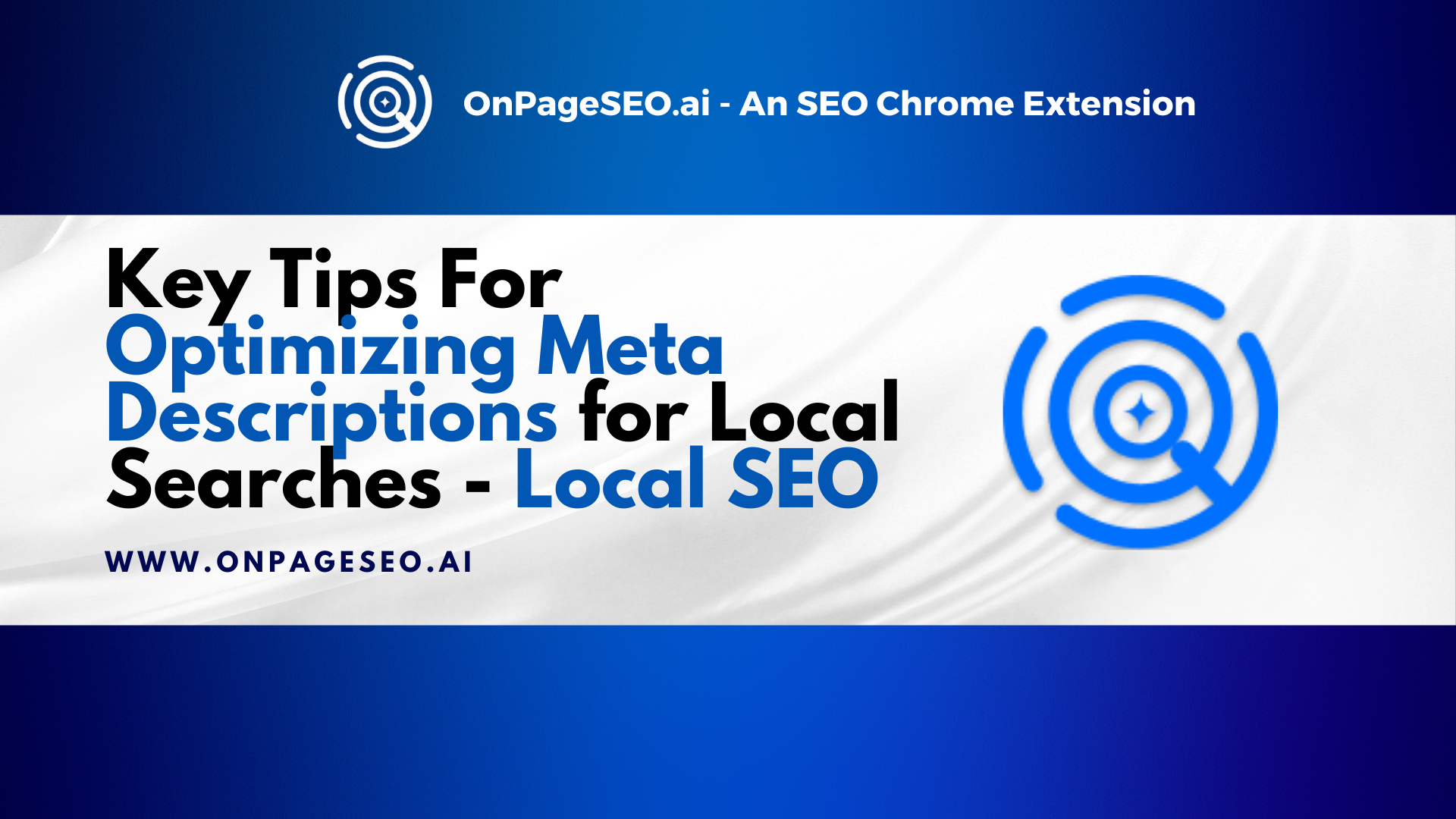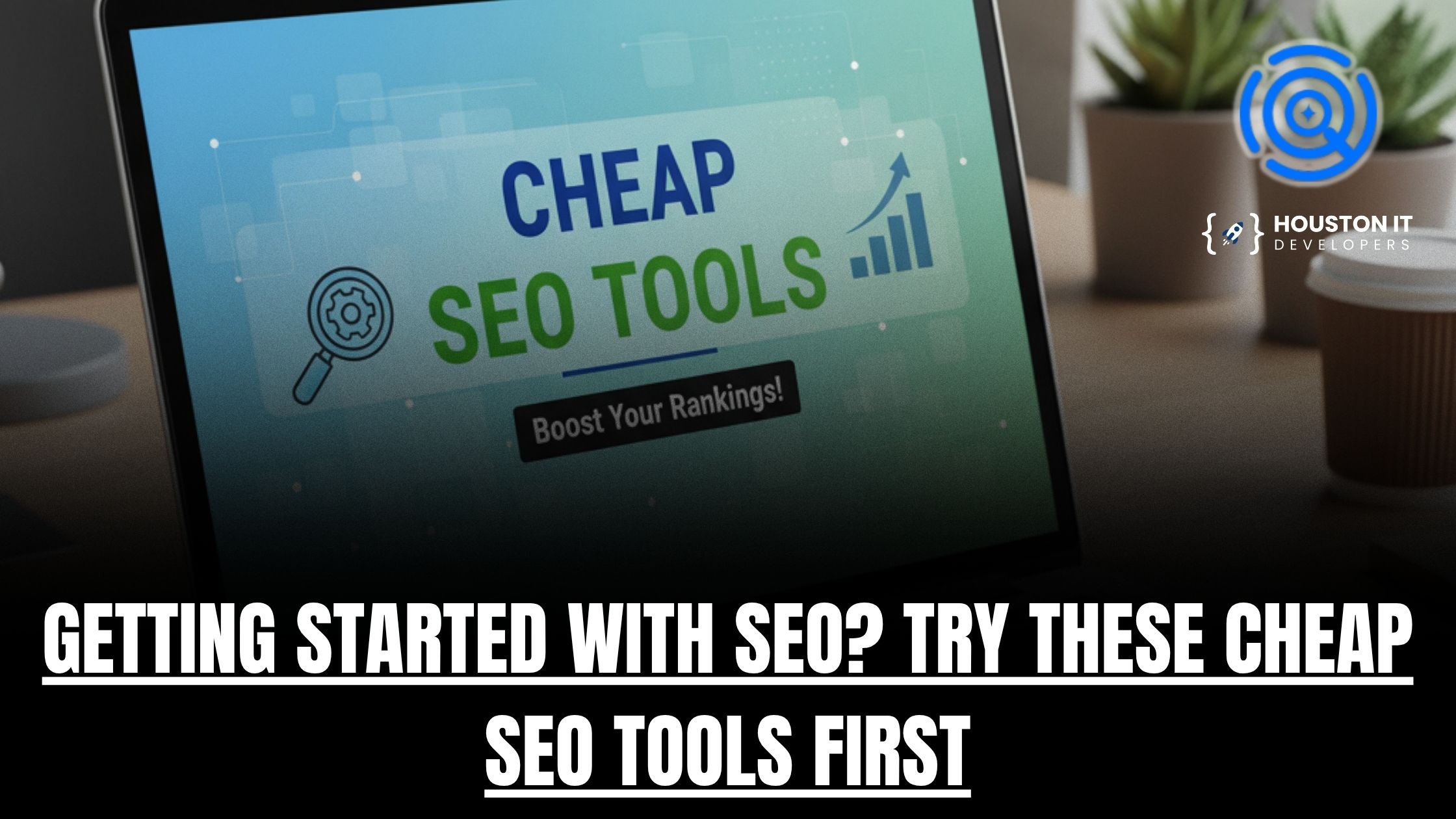Want to draw more local customers to your business with a simple tweak? Optimizing meta descriptions for local searches can do just that. A meta description is that short snippet of text you see under a search result on Google, giving users a sneak peek of what your page offers. For local searches like “best pizza in Denver” or “plumbers near me,” a well-crafted meta description can make your business stand out, enticing clicks from nearby folks looking for your services.
In this guide, we’ll break down what a meta description is, why it’s critical for local SEO, and how to optimize it for maximum impact. We’ll toss in tips, examples, and tools like a meta description generator or meta description checker to make it easy. Plus, we’ll show how OnPageSEO.ai can help you nail your meta description length and avoid pitfalls like duplicate meta descriptions. Ready to boost your local search game? Let’s dive in!
What Is a Meta Description? The Basics

What is a meta description? It’s a brief summary of your webpage’s content, coded into the HTML as a <meta> tag, appearing under the title in search results. Think of it as your digital elevator pitch—short, sweet, and compelling. For example, if someone searches “coffee shops in Seattle,” a meta description might read, “Visit Brew Haven for the best coffee in Seattle—organic blends & cozy vibes. Open daily!”
Unlike titles, meta descriptions don’t directly impact rankings, but they’re crucial for click-through rates (CTR). A good one can lure users to click, especially for local searches. Fun fact: Google processes over 3.5 billion searches daily—many of them local—and a strong meta description can help your business shine in that crowd.
Why Optimize Meta Descriptions for Local Searches?

How can meta description tags help with the practice of search engine optimization? They’re your chance to convince local searchers to pick your page over competitors. For local SEO, a meta description that includes your location and services—like “Top pizza in Denver | Joe’s Pizzeria—fresh, local ingredients, open now!”—can hook nearby customers.
Local searches are booming. Over 46% of Google searches have local intent, with terms like “near me” growing by 150% since 2017. When someone searches “plumbers near Chicago,” a meta description like “Reliable Plumbers in Chicago | 24/7 emergency fixes—call today!” can make your business the obvious choice. It’s not just about showing up—it’s about standing out and driving clicks.
How to Optimize Meta Descriptions: Best Practices

How to optimize meta descriptions? It’s easier than you think, and it can make a huge difference for local searches. Here’s a step-by-step guide to get you started, blending SEO smarts with local appeal:
- Keep It Within Meta Description Length Limits: Aim for 160-165 characters—Google typically truncates longer descriptions. “Best coffee in Seattle | Brew Haven—organic, cozy vibe, open daily!” (57 characters) fits perfectly, while “Best coffee shop in Seattle with organic blends and a cozy atmosphere open daily!” (89 characters) risks getting cut off.
- Include Local Keywords: Add your city, neighborhood, or “near me” to match local search intent. For a dentist in Los Angeles, try “Dentist in Los Angeles | Dr. Smith—family care, emergency slots available.”
- Make It Compelling: Use action words or benefits to entice clicks, like “Visit,” “Save,” or “Discover.” “Discover top sushi in Brooklyn | Sakura—fresh, affordable, now open!” grabs attention.
- Add a Call to Action (CTA): What is a CTA for meta description? It’s a nudge to act, like “Book now,” “Call today,” or “Visit us.” “Plumbing in Chicago | Reliable Fixes—Call today for 24/7 service!” drives urgency.
- Avoid Duplicate Meta Descriptions: Each page needs a unique meta description to prevent SEO penalties and confusion. Don’t reuse “Best pizza in Denver | Fresh slices daily” across multiple pages—tailor it, like “Best pizza delivery in Denver | Joe’s—fast, hot, local.”
- Include Keywords, But Don’t Overdo It: Should you include keywords in meta description? Yes, but naturally. “Best tacos in Austin | Taco Haven—authentic, local flavors, open now!” works; “Tacos tacos tacos Austin Taco Haven” looks spammy.
These tips ensure your meta description is optimized for local searches, boosting visibility and clicks without tripping up search engines.
Tools to Help: Meta Description Generator and Checker

Writing meta descriptions can feel tricky, but tools make it a breeze. A meta description generator uses AI to whip up ideas fast—input keywords like “pizza in Denver,” and it might suggest, “Best pizza in Denver | Joe’s Pizzeria—fresh, local, open now!” (49 characters). It’s a great starting point for busy site owners.
Then, use a meta description checker to verify length, keyword inclusion, and uniqueness. Tools like OnPageSEO.ai can analyze your meta description length, flag duplicates, and suggest tweaks to optimize for local SEO. It’s like having a personal SEO coach in your pocket!
Common Meta Description Pitfalls: What to Avoid

What should be avoided in a meta description? A few mistakes can tank your local SEO efforts:
- Overstuffing Keywords: “Pizza pizza Denver pizza Joe’s pizza” looks spammy and turns users off. Stick to natural phrasing.
- Being Too Vague: “Pizza place in Denver” lacks punch. “Best pizza in Denver | Joe’s—fresh, local, open now!” tells a story.
- Ignoring Local Intent: Skip “Great pizza for everyone” for local searches—add “in Denver” to target nearby customers.
- Duplicate Descriptions: Using “Best food in Denver | Fresh daily” on multiple pages confuses Google. Make each unique.
Avoid these, and your meta description will shine for local searches, driving more clicks from your community.
Examples: Good vs Bad Meta Descriptions
What is an example of a good meta description?
“Best coffee in Seattle | Brew Haven—organic blends, cozy vibe, open daily! Visit us for a perfect brew.”
- It’s 70 characters, includes local keywords (“Seattle”), has a CTA (“Visit us”), and is compelling.
What is an example of a bad meta description?
“Coffee shop with drinks.”
- It’s vague, misses local intent, lacks a CTA, and is only 27 characters—Google might auto-generate something less helpful.
For local searches, a good meta description aligns with “coffee shops near me” or “best coffee Seattle,” boosting your chances of ranking and clicking.
Answering Your Meta Description FAQs
Got questions? Let’s tackle them with quick, practical answers, weaving in local SEO insights:

- What is the optimal character for meta description? Aim for 160-165 characters to avoid truncation in Google’s results, ensuring your local message fits.
- Does Google look at meta descriptions? Yes, but not for rankings—Google uses them for snippets, so a strong meta description boosts CTR, especially for local searches.
- What is the best recommendation on meta description? Keep it under 165 characters, include local keywords, add a CTA, and avoid duplicates—perfect for “optimizing meta descriptions for local searches.”
- What is metadata optimization? It’s refining meta descriptions, titles, and tags to improve SEO, like ensuring “plumbers in Chicago” appears in your description.
- How to lookup Meta description? Use a meta description checker or view source code (right-click, “View Page Source”) to see the
<meta name="description" content="...">tag. - How to edit meta description? Log into your CMS (like WordPress), find the SEO plugin (e.g., Yoast), or edit HTML directly—update with local keywords and check length.
- What should be avoided in a meta description? Avoid keyword stuffing, vagueness, duplicates, and ignoring local intent—keep it sharp and relevant.
These answers help you master meta description optimization for local SEO, ensuring your business shines in searches.
How OnPageSEO.ai Elevates Your Meta Descriptions
Optimizing meta descriptions can feel overwhelming, but OnPageSEO.ai’s SEO extension makes it a breeze. It offers:
- A meta description generator to craft local-focused descriptions, like “Best pizza in Denver | Joe’s—fresh, local, open now!” in under 165 characters.
- A meta description checker to verify length, keyword inclusion, and uniqueness, flagging duplicate meta descriptions across your site.
- Real-time suggestions for local keywords, ensuring “plumbers near Chicago” or “coffee in Seattle” hits the mark for your audience.
It’s perfect for local businesses aiming to optimize for searches like “best tacos near me.” Try it at www.onpageseo.ai and get your free meta description optimizer now to supercharge your local SEO!
Wrap-Up: Start Optimizing Your Meta Descriptions Today
Optimizing meta descriptions for local searches is a small change with big results. By keeping your meta description length under 165 characters, including local keywords, adding a CTA, and avoiding mistakes like duplicates, you can boost clicks from nearby customers. Tools like a meta description generator or checker make it fast and easy, and OnPageSEO.ai takes it to the next level with AI-powered insights.
Take a look at your current meta descriptions. Are they local-focused, unique, and compelling? If not, tweak them today—add “in Denver” or “near Chicago,” and watch your local visibility climb. Grab OnPageSEO SEO Extension or get your free meta description optimizer now to streamline the process. Let’s make your business the top pick in local searches, one click at a time!



